Shown three sections of the circuit that are to be connecte in turn to the same battery via a switch. The resistors are all identical, as are capactiors. Rank the sections according to
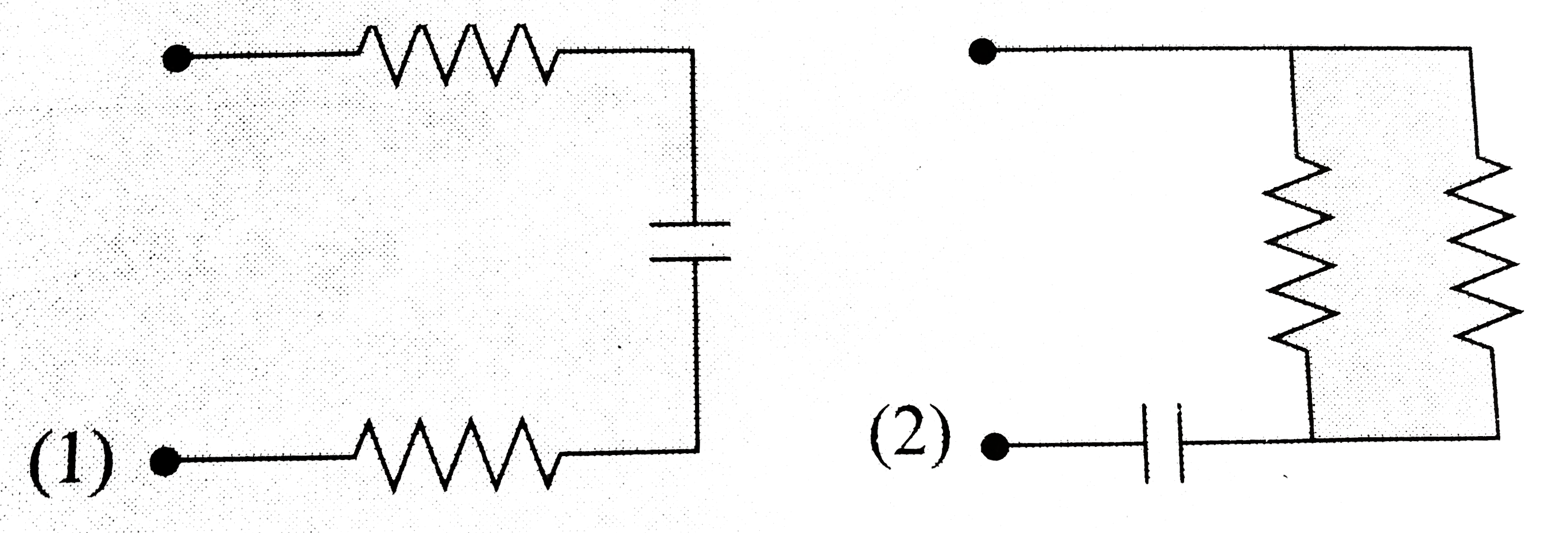
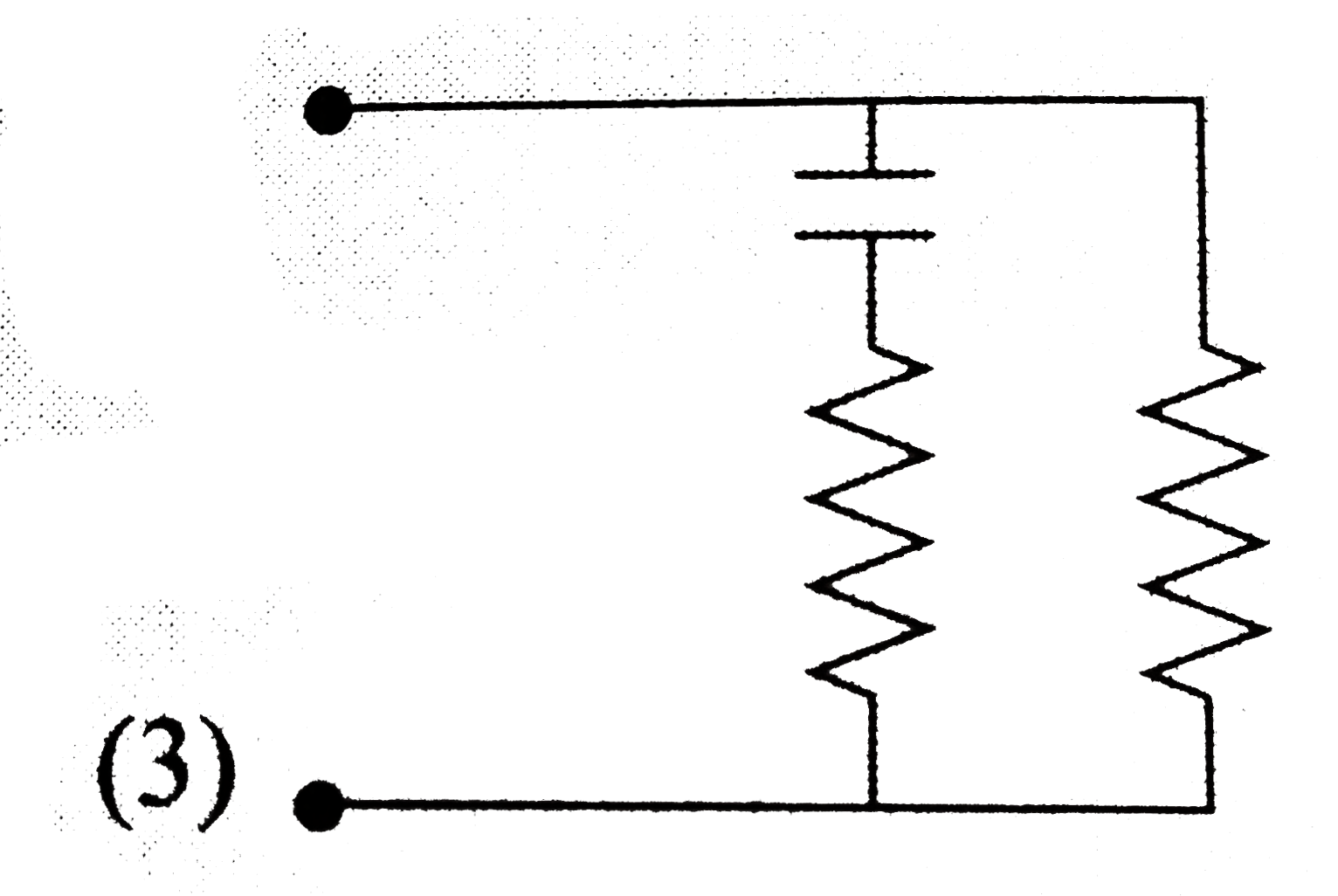
a. the final (equilibrium) charge on the capacitor.........
b. the time required for the capacitor to reah 50% of its final charge, greatest first.......
a. In each case, in steady state (equilibrium), potential difference
across capacitor will be E. So charge in each case will be finally q = CE.

b. τ1=2RC,τ2=R2C,τ3=2RC
For (1), time constant is the largest so it will take maximum
time. For (2) it is the smallest. So time taken will be in the
order (1) gt (3) gt (2).
Topper's Solved these Questions
- ELECTRIC CURRENT AND CIRCUITBOOK - CENGAGE PHYSICS ENGLISHCHAPTER - ELECTRIC CURRENT AND CIRCUITEXERCISE - Subjective
28 Videos
- ELECTRIC CURRENT AND CIRCUITBOOK - CENGAGE PHYSICS ENGLISHCHAPTER - ELECTRIC CURRENT AND CIRCUITEXERCISE - Single Correct
72 Videos
- ELECTRIC CURRENT AND CIRCUITBOOK - CENGAGE PHYSICS ENGLISHCHAPTER - ELECTRIC CURRENT AND CIRCUITEXERCISE - Exercise 5.1
28 Videos
- ELECTRIC CURRENT & CIRCUITSBOOK - CENGAGE PHYSICS ENGLISHCHAPTER - ELECTRIC CURRENT & CIRCUITSEXERCISE - Kirchhoff s law and simple circuits
15 Videos
- ELECTRIC FLUX AND GAUSS LAWBOOK - CENGAGE PHYSICS ENGLISHCHAPTER - ELECTRIC FLUX AND GAUSS LAWEXERCISE - MCQ s
38 Videos
Similar Questions
find the emfs ε1andε2 in the cirucit in fig also find the potetial differece of point b relative to point a.
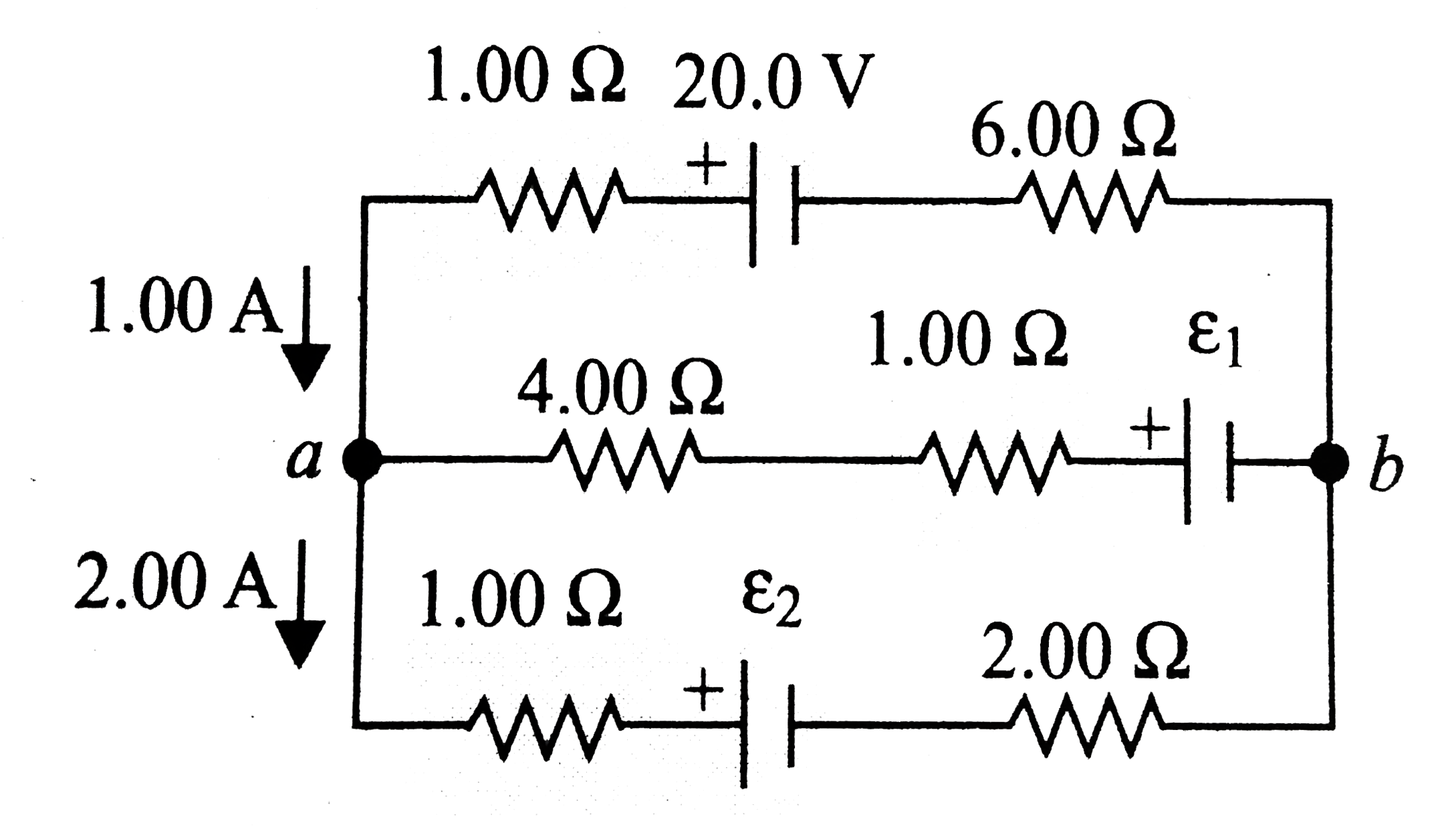
View SolutionEquivalent resistance between A and B in Fig. is
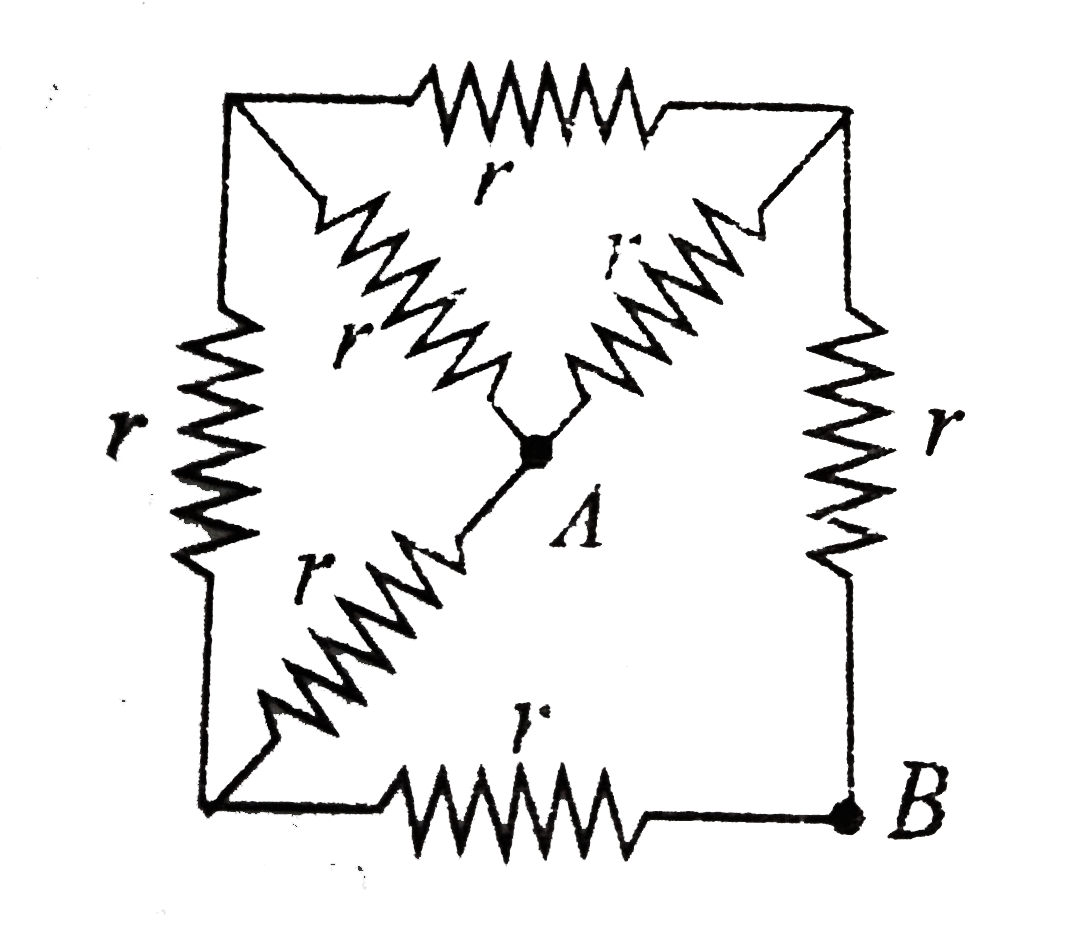
View SolutionHow many electrons per second pass through a section of wire carrying a current of 0.7A?
View SolutionIn the circuit element given here, if the potential at point B, VB=0, then the potentials of A and D are given as ltBrgt

View SolutionElectric flux through a surface are 10m2 lying in the xy plane is (if→E=ˆi+√2ˆj+√3ˆkN/C)
View SolutionShown three sections of the circuit that are to be connecte in turn to the same battery via a switch. The resistors are all identical, as are capactiors. Rank the sections according to a. the final (equilibrium) charge on the capacitor......... b. the time required for the capacitor to reah 50% of its final charge, greatest first.......
View SolutionIn the circuit shown, all capacitors are identical. Initially, the switch is open and the capacitor marked C1 is the only one charged to a value Q0. After the switch is closed and the equilibrium is reestablished, the charge on the capacitor marked C1 is Q. Find the ratio initial change to final charge in capacitor C1.
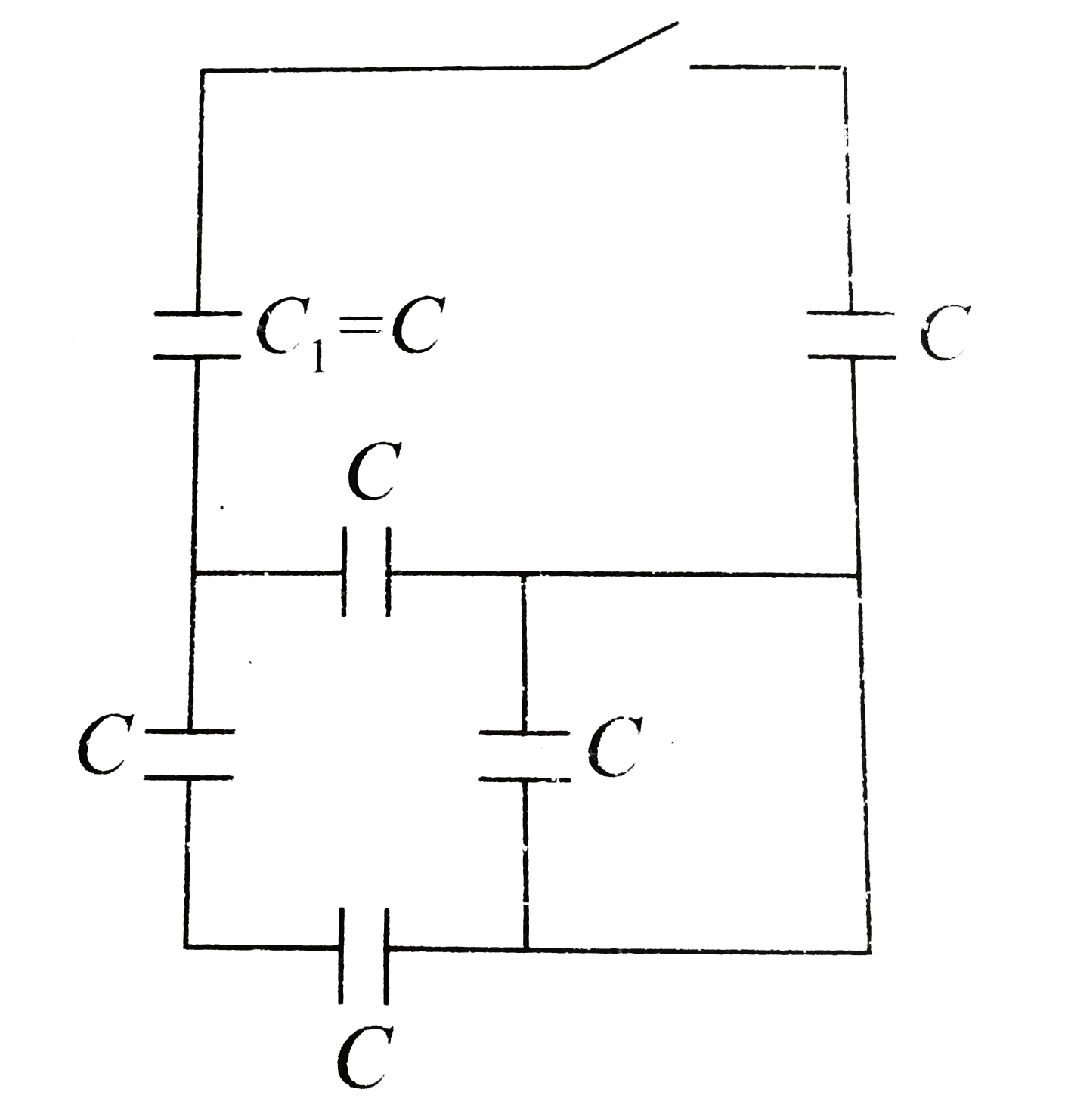
View SolutionThree capacitors (of capacitances C , 2C and 3C ) and three resistors (of resistance R , 2R and 3R ) are connected with a battery and switch S as shown in the figure. When switch S is open, charges on the capacitors are shown. Switch S is closed at t=0 sec . The time constant of the circuit will be
View SolutionThe figure shows three circuits with identical batteries, inductors and resistance, Rank the circuits according to the currents through the battery just after the switch is closed, greatest first :

View SolutionA capacitor C1 is charged to a p.d.V. The charging battery is then removed and the capacitor is connected to an uncharged capacitor C2. The final p.d. across the combination is
View SolutionIn the circuit shown in figure, initially the terminals A and P are connected together to change 4muF capacitor. Then battery is disconnected and the terminals P and B are connected together. Then the ratio of final charge and initial charge on 4muF capacitor is:
View SolutionThe figure shows three circuit with identical batteries, inductors and resistance. Rank the circuit according to the currents through the battery just after the switch is closed greatest first :
View SolutionFind the final charge on each capacitor if they are connected as shown in the figure
View SolutionThree identical capacitors are charged by connecting them in parallel across a battery of V volt. They are then allowed to discharge via resistor R1,R2andR3Here, Q charge versus t time graphs are shown. Then R1 is smallest or not.
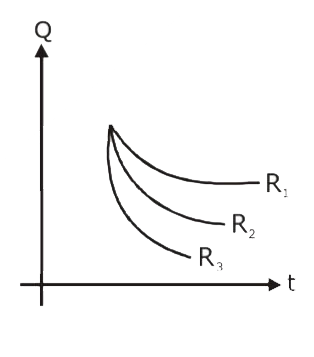
View SolutionFor the circuit shown in figure below, At t = 0, switch is closed, the initial current through resistor and final charge on capacitor are
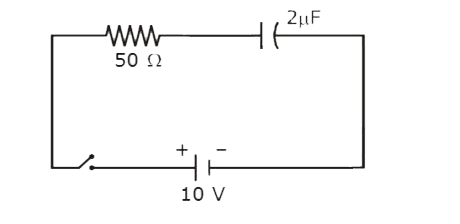
View Solution

